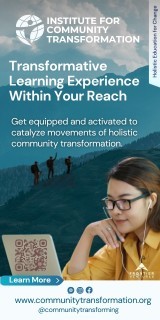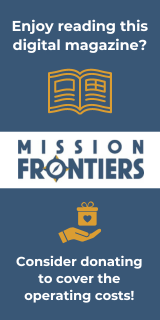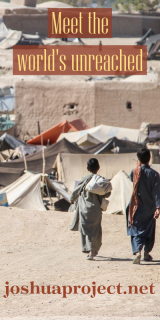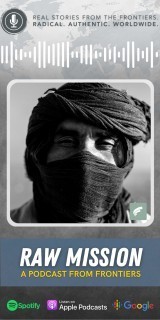Horizon Three: Re-thinking Mission Education The Breakthrough for On-Field Mission Training

The amateurization versus professionalization debate--the two long-standing extremes in the training dimension of missionaries--is being substantially diminished as distance education reshapes the educational landscape of North America. Historically marginalized because of its perceived illegitimacy, distance education is now becoming mainstream as more and more colleges and universities vie for their "newest" market--the older, adult student already in the work force. Now that education is accessible anywhere, anytime, it's high time to consider the implications for the missionary task, including mobilization and cross-cultural effectiveness. The accessibility of education will dramatically impact mission training as well as bring to a common middle ground those who debate the merits and minuses of amateurization and professional-ization of the mission force.
Effects of Amateurization and Professionalization
Amateurization, in its extreme, refers to sending missionaries unaware of missiological realities. Zealous for service, many recruits can be quickly placed on the field without extensive training or preparation. However, these red-hot recruits can flame out quickly as they come to see that their eagerness for service and passion for missions cannot easily or effectively overcome the incredible tangle of communication and cultural realities experienced on the field. The amateur's ministry can often lead to stone walls instead of open doorways. Perhaps Proverbs 19:2 is applicable: "It is not good to have zeal without know-ledge, nor to be hasty and miss the way."
Professionalization, the other extreme in mission training, refers to missionaries who also arrive unaware of field realities. Sequestered by the demands of residential academic institutions, these professionals have been thoroughly trained in the classroom of their culture. However, soaking up education outside one's ministry context delays field engagement: acquiring a second language is more difficult, roots "at home" are deeper, financial constraints are often significantly more demanding. Sometimes these delays can mean a loss of passion for the cause as well as an actual loss of people willing to leave their professional life behind to move to another culture as a "learner." And then there is the "ivory tower disconnect": academic life disconnected from a place of ministry often proves to be an amazingly frustrating way to prepare for working cross-culturally in a two-thirds-world village. Maybe Jesus' quotation of Isaiah in Matthew 13:14 is appropriate: "You will be ever hearing but never understanding; you will be ever seeing but never perceiving."
The amateurization of missions often results from the sending agency's decision to bypass educational convention in exchange for a larger, but less educated missionary force. Amateurization also results from substituting vocational training for foundational preparation. Professionalization, on the other hand, often results from the sending agency's decision to adhere to educational convention in exchange for a smaller, but better educated mission force. Steeped in foundational training, professional academics is often substituted for vocational, on-the-job training. Neither amateurization nor professionalization necessarily result in accelerating a church for every people since neither extreme produces a truly effective missionary force.
Impact of Higher Education's Culture
This polarization in mission training has resulted, at least in part, from a historical North American cultural reality: higher education institutions serve as the gatekeeper to learning. Entrance is possible when students are available to follow the schools' guidelines regarding place, time, and sequence of learning. This pattern of funneling learners onto a residential campus has been wildly successful as our economic engine has pumped billions of tax and private dollars into creating and maintaining the largest, most highly regarded and diversified system of higher education in the world.
This system, however, has favored people who are traditional students: younger people who can relocate to a campus and give full attention to their studies. While enrolling millions, this approach has also left out millions of non-traditional students: older students, especially 25 to 45, who are rooted in communities with families and jobs and thus can't relocate to a campus or adjust to college schedules geared for younger counterparts.
Non-traditional students--adults--have been left out because American higher education has been inaccessible to them. Ironically, adult students are often the most strategic people for educational investment because they know much better their interests, gifts and strengths, and they are ready to learn--unlike most 18- to 22-year-olds. And adults, able to pay because of incomes, are less likely to assume wrenching educational debts.
Educational Inaccessibility Affects Missions
Since the higher education institutions have historically served as the gatekeepers for learning, the mission industry has been trapped between the two poles of amateur-ization and professionalization. By keeping "legitimate" schooling confined to a campus of 18- to 22-year-olds, mission training has been held hostage to education's inaccessibility.
- Educational inaccessibility hinders ministry effectiveness. While the higher education institutions serve as gatekeepers for the learning process, mission agencies and churches have been forced to pick sides in the amateurization and professionalization debate. The historical schooling pattern handed down to the mission industry means delaying going to the field so candidates can go to school; it also means those on the field can seldom combine ministry with study since "the field" is seldom associated with regionally accredited residential campuses. Whether one opted for less training and earlier field arrival or more training and later arrival, the end result has been the same. Effectiveness is reduced. Failing to acquire theological and missiological schooling can lead to amateurization. Delaying the ministry in favor of substantial schooling apart from ministry, or interrupting field ministry for elongated periods of study, can lead to professionalization.
- Educational inaccessibility hinders mobilization. Thousands of prospects for career missionary service are overlooked because as adults the required pre-field education is inaccessible to them. Ironically, the very characteristic (being adults) that makes them ministry-wise and mature--and thus prime, gifted candidates for missions--is one of the key characteristics that keeps them from mission service given the historic pattern of schooling.
What to do? Deleting the schooling requirement fosters amateurization; yet changing the culture of schooling that has produced professionalization has seemed impossible. What would happen to the amateurization versus professionalzation debate if education was more accessible?
Seismic Shift in Higher Education
This year, 1998, may well be viewed as a seismic shift in higher education, ushering in the third era of American post-secondary schooling. Before discussing this new reality, it's helpful to summarize the first two eras.
In the first era--defined by the Land Grant Act of 1862--higher education became available. The Land Grant Act established universities at the state level that focused on agriculture and mechanics. The need to increase educational availability was catalyzed by the developing agricultural economy and the coming industrial age. Consequently, higher education was greatly expanded and became geographically available to more Americans than ever before. Students fit a traditional profile.
In the second era--defined by the G.I. Bill of 1944--higher education became attainable. The G.I. Bill, swelling the campuses with new students (mostly adults) through government grants, was catalyzed by the rapid demobilization of 11 million returning World War II veterans who could more easily fill a classroom chair than a job that didn't yet exist. Consequently, higher education again greatly expanded as it became financially attainable to more Americans than ever before. With the influx of veterans, the student profile became a mixture of traditional and non-traditional.
In the third era--being currently defined by the Western Governor's University in 1998--higher education is becoming accessible. The Western Governor's University, a virtual university, is ushering in this new era because it is an expression of political will that parallels the Land Grant Act and the G.I. Bill. It is significant to note that all three shifts in higher education came as politicians moved the boundaries of the residential campus and its student profile to accommodate a changing work force.
WGU isn't pioneering on-line delivery; it isn't forging new ground in developing partnerships between higher education and the corporate world; it isn't necessarily even challenging the "university" model of educational entrepreneurship. The University of Phoenix, the largest accredited private (and for profit) school in America with 50,000 students on 98 campuses, is the pioneer. But WGU is legitimizing this pattern of schooling because its founders are the Governors from 17 states who want a university that's accessible to their citizens (and anyone else).
The University is a clearinghouse for the electronic courses from the public and private colleges in those 17 states, courses that can be bundled into a degree from WGU. Without a campus, a library, or residential faculty, WGU is a degree granting institution. Academic credit will be based on outcomes (what the student has done and does) rather than the inputs (seat time).
While a University of Phoenix, for example, has had to battle accrediting groups for every step of progress in its 25-year history, accrediting groups--who can read the political winds--will have to approve WGU and thereby further legitimize accessible higher education. This may well be the beginning of the end for regional accrediting groups, an instrument of geography that seems anachronistic in this academic world made borderless by technology.
Adult Students: The New Reality
WGU reflects the "great awakening" in higher education as colleges and universities grasp the reality that there are 45 million people between 25 and 44 who graduated from high school but who haven't graduated from college. This market dwarfs the 2.7 million 18-year-olds who graduate from high school annually. Discovering these "new" older students has surged higher education enrollments to an all-time high of 14 million. Older students--adult learners--with jobs and families are time-starved and geographically bounded. Since they can't "go off" to college, colleges are coming to the students, providing what they need when they need it--that's distance education. Technology, e.g., the Internet, is becoming an educational tool to serve current students and be a catalyst to enroll new students as every phone and cable jack becomes a potential classroom site (see Table 1).
Distance education has also gained significant momentum through the so-called "degree completion movement" which especially targets the 5 million people between 25 and 44 who have an associate degree. Adult students can complete their bachelor's degree in 18 months by completing a continuous series of five-week courses that meet one night a week. Accessibility is the hallmark of the distance education movement, with the result of generating substantial students and substantial income for participating colleges (see Table 2).
The number of people 25 and older who are pursuing an undergraduate degree numbers 5 million, or 40 percent of the total undergraduate enrollment. This is possible because higher education has become accessible to these folks.
The market is moving distance education from the margins to the mainstream. Technology is moving higher education from being delivered at a place to being placeless. And accessible education means learning opportunities are moving from being regulated by the institution to being captured by the learner "just-in-time."
New Horizon for Missions
While distance education is a national movement, it has not fully evolved or been fully embraced among higher education's entire constituency including schools and seminaries that are the providers of mission training. However, the mission industry--EFMA and IFMA members--has a vital interest in encouraging, and even compelling, these schools and seminaries to respond to this seismic shift in accessible education. The mission industry is uniquely positioned to help mission training institutions embrace distance education. Indeed, agencies should consider the following precedent from many, many corporate/higher education partnerships.
In a knowledge-based, fast-changing, global economy, corporations already know their employees need continuing education. Since these companies often underwrite some of this education, enrollment-driven colleges are eager to serve these companies and gain their employees as students. Schools customize curricula, negotiate on price, and make programs accessible (e.g., on-site at the company).
There's a pattern here for mission agencies and their thousands of "employees"--prospective and active--who need access to pre-field and on-field continuing education. Working as a consortium, agencies could define what they want schools to do for their people (curriculum, price, accessibility) and in return would guide their people to those schools.
Distance education, made possible by powerful national forces, and then made workable by mission agency/higher education partnerships, could be one of the new horizons for missions with significant implications for the mobilization and effectiveness of the North American mission enterprise.
1. Mobilization. Accessible pre-field mission training for mission-alert adults could mobilize 50,000 gifted people for cross-cultural service. When education is extended to adults, it's no longer a hurdle to missionary service.
How? Working from table one on page four, "Post-Secondary Educational Attainment," there are 20 million people between the ages of 25 and 44 who have some college or an associate degree. Among that population there are approximately 5 million evangelicals (estimate 25 percent of the 20 million) of whom 50,000 have made a missions commitment (estimate 1 percent of the 5 million). These are people who serve on mission committees, go on short-term mission trips. They are active in the life and ministry of their church. They are prime candidates for laser-like focus on specific training and education opportunities that would make them effective and able cross-cultural missionaries.
2. Effectiveness. Accessible mission training, both pre-field and on the field, diminishes the challenges of amateurization and professionalization. Training delivered "just-in-time" results in greater learning and effectiveness.
Distance education is also a new horizon for the emerging church. Why?
Distance education embraced by North American agencies and schools will augment similar efforts in Africa, Latin America, and Asia. The expansion of the church has never been dependent on the residential delivery system; however, national people--mostly adults--who are already leading the expansion would certainly benefit from the content of theological and missiological education being made accessible. Non-Western theological institutions often follow the Western pattern. And while that has been unfortunate in a historical sense, Western schools adopting the new pattern of distance education provides a powerful model for our global colleagues. When North America makes its colleges more accessible and less campus-restricted, colleges around the world will surely follow.
USCWM and IMB Involvement
Both the U.S. Center for World Mission and the Southern Baptist International Mission Board view this new horizon optimistically. The USCWM's largest project has been the development of an accessible study program, World Christian Foundations, which leads to the completion of a B.A. degree or provides an M.A. degree. Regionally accredited schools in the States along with schools in Canada and Malaysia have adopted WCF. Prospective and active missionaries can complete the program without ever having to visit the campus.
The IMB, through its new International Centre for Excellence in Leadership, is developing a field-based leadership-training program that will be accessible for missionaries and national leadership when they need it where they live.
Response: Effectiveness Not Guaranteed by Paul E. Nelson
Dr. Ben Sells gives us a broad overview of the educational landscape complete with its history, strengths, limitations, potential, and vested interests. Distance education has been part of that landscape since the invention of writing, but as Ben correctly observes, the "culture of schooling" has relegated the lowly correspondence course to the domain of amateurs.
If the seismic shift in Western higher education, to which Dr. Sells refers, means that credentials earned through distance learning are actually being nudged closer to acceptance by the educational establishment, then seismic is probably the right word. If, however, that shift is assumed to mean that training delivered "just in time" results in greater learning and effectiveness, then some basic questions about the correlation between the education "professional" missionaries currently receive and their effectiveness in cross-cultural ministry must be raised.
Ministry effectiveness requires affective as well as cognitive development, but the various media identified with the delivery of distance education probably do not engage people equally well at both levels. Things like motivation, flexibility, spiritual vitality, trust, ability to manage complex relationships, and tolerance for ambiguity, are almost always the "make or break" issues. Effectiveness is largely determined by how well missionaries manage, and ultimately grow through, these affective struggles. The educational delivery system, whether residential or distant, is not the central issue.
Distance learning may be the solution to the professionalization of mission, but it will probably not be the key to missionary effectiveness.
It could, however, become a vital developmental tool for on-field missionaries if the Great Commission community were to view distance education as something other than an accommodation to adults who lack access to residential programs. This new delivery system gives us the opportunity to reexamine our core beliefs about what it takes to prepare and sustain Christians in effective cross-cultural ministry.
We could engage in a collective process of creating an entirely new individualized, interactive, hyperlinked, ministry-integrated resource tool for both spiritual and professional development. Or we could continue to invest in getting the new pipeline connected to shined-up versions of the status quo. However we proceed with these educational options, missionary effectiveness will continue to depend on our ability to infuse learners with an understanding of the inherent difference between striving for knowledge that puffs up and love that builds up as the basic credential for effective ministry. (I Cor. 8:1)
Paul E. Nelson has been President of Mission Training International (MTI) in Colorado Springs, Colorado for the past eight years. MTI, formerly Missionary Internship, has been working together with churches and mission agencies since 1954 preparing missionaries for cross-cultural life and ministry. MTI's more than 12,000 alumni serve with well over 125 different mission agencies in virtually every type of ministry. Paul and his wife Karen are members of Wycliffe Bible Translators.
Response: Creative Calculations by Steve Hoke
Reading Dr. Ben Sells' article is like getting your eye-glass prescription updated--it suddenly brings distant objects into clear focus. Ben helps those involved in missions training by bringing movements on the horizon into sharp profile. Let me offer six simple suggestions to supplement Ben's already helpful analysis.
- Partner Actively: We need to invigorate the emerging NEXT STEP Partnership for Mission Training (which includes the key stakeholders in missions training--churches, agencies, institutions and receiving churches) in order to redesign current mission training curriculum and delivery systems. Further, we must proactively plan for and create needed distance learning modules.
- Design Balanced Learning: We need to take off any "blinders" constricting our focus so our conception of missions training is broadened to include at least these three dimensions: character qualities, ministry skills, and knowledge goals. Character formation is not well suited for the Net or distance learning. Discussing these issues together will help us identify, design, and deliver the modules that could best be acquired at a distance.
- Match Appropriately: We must carefully match candidates with the most appropriate learning approach and delivery system. Only in joint discussion among stakeholders can we decide what training can best be provided by local churches, specialized training agencies, the institutions, and finally, the receiving churches. Only by cooperatively "parsing" out who can do what best, will we make positive steps forward in practical partnerships.
- Attend to Quality: The mere accessibility of mission training via distance education options does not necessarily translate into greater missionary effectiveness or greater mobilization. But the potential is promising. Some vital concerns to quality we must not neglect: trustworthy mental models, sound curriculum design, culturally appropriate learning and teaching styles, reproducible training, quality mentoring, hands-on training, and valid evaluation.
- Experiment Creatively Yet Cautiously: We must try the most promising options, while monitoring their relevance and effectiveness. Which distance courses best serve the pre-field process and which are best taken on-field? How can we combine basic background knowledge courses from schools, mentored ministry internships in churches, and on-the-job training under mission supervision on the field?
- Recruit and Equip Mentors: There is no substitute for relational empowerment--life-on-life exposure to a seasoned vet who can walk alongside the pre-field missionary candidate, or assist the newly arrived first-term missionary on the field. Churches, agencies, schools and receiving churches must each commit themselves to raising up more qualified mentors. Supervised internships in local churches stateside, and during the first-year in the host culture, are one proven way to insure a "high touch" companion in a "high tech" world.
Ben's article alerts us to the explosive breakthrough for on-field mission training that the coming proliferation of distance education options may provide. Now is the time for stakeholders in the mission training enterprise to join hands in partnerships that will allow us to embrace and harness the potential power of the coming distance education revolution.
Dr. Steve Hoke, is vice president of staff development and learning with Church Resource Ministries (CRM) in Anaheim, CA. Steve works widely and collabor-atively with groups such as ACMC and TCMC, as well as churches and institutions to enhance the quality of missionary and leader training provided by churches and agencies. He serves as an adjunct faculty at Fuller/School of World Mission and Talbot Seminary.







comments